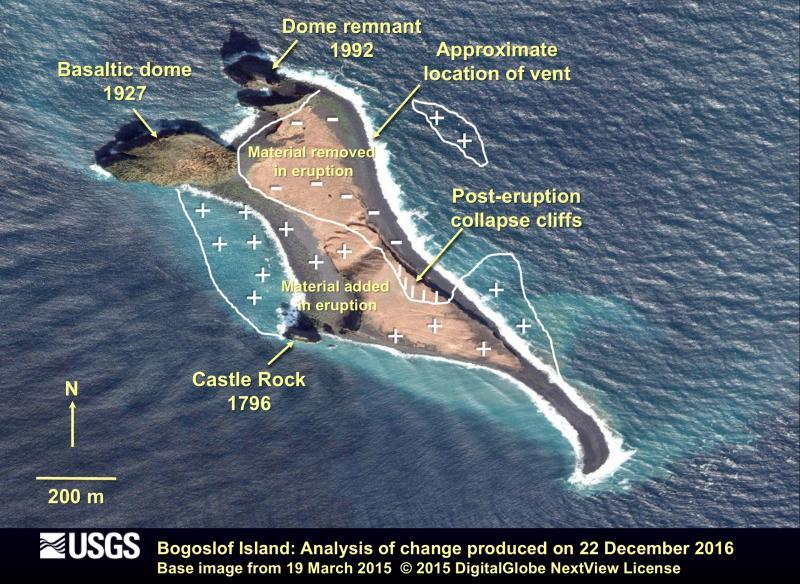
A volcano in the eastern Aleutians has been erupting for the past week. Bogoslof volcano is an uninhabited island 60 miles northwest of Unalaska. It’s part of the Alaska Maritime Wildlife Refuge, which is based hundreds of miles away in Homer. Steve Delehanty, the refuge’s manager, also lives in Homer. His reaction to hearing about the eruption was pure excitement.
“On Bogoslof, changes have occurred within human lifetimes of people who are alive today,” Delehanty said. “And even within the career of people who have worked on the refuge.”
You can see change on a human timetable.
“Those of us who have been out there in the last 10 years got used to thinking of the new normal,” Delehanty said. “Well, it’s going to look different again next year.”
The Alaska Volcano Observatory said recent eruptions have also produced new land, meaning Bogoslof is changing shape.
What does that mean for the seabirds and marine mammals that call Bogoslof home?
“They need these forces to occur for them to live, but at the same time those very forces can change their home,” Delehanty said. “It creates habitat and it takes habitat away.
Being more than 700 miles away from Bogoslof means Delehanty has to be patient.
“One of the odd things about being a refuge manager for a national wildlife refuge that is so remote and hard to get to, is you can’t just go out there this afternoon and see what’s going on,” Delehanty said.
Delehanty said the soonest he’ll see Bogoslof in person is this summer when the research vessel Tiglax is back in the Aleutians.
Until then, Delehanty will have to satisfy his curiosity with satellite imagery of the island.
Zoe Sobel is a reporter with Alaska's Energy Desk based in Unalaska. As a high schooler in Portland, Maine, Zoë Sobel got her first taste of public radio at NPR’s easternmost station. From there, she moved to Boston where she studied at Wellesley College and worked at WBUR, covering sports for Only A Game and the trial of convicted Boston Marathon bomber Dzhokhar Tsarnaev.




